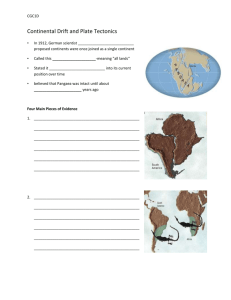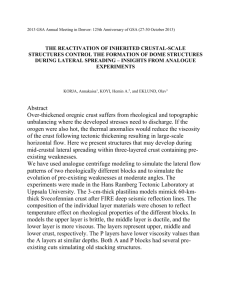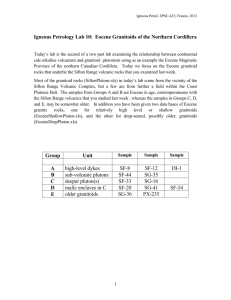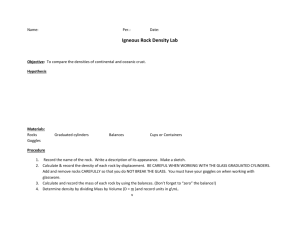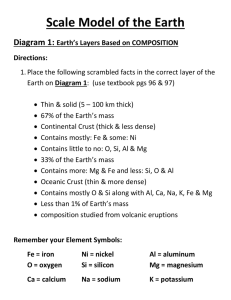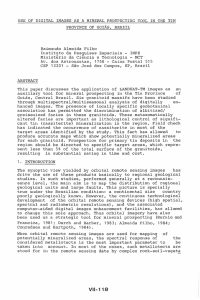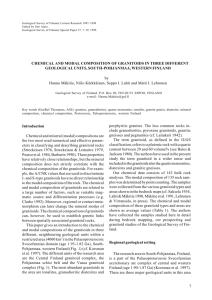Chapter 18
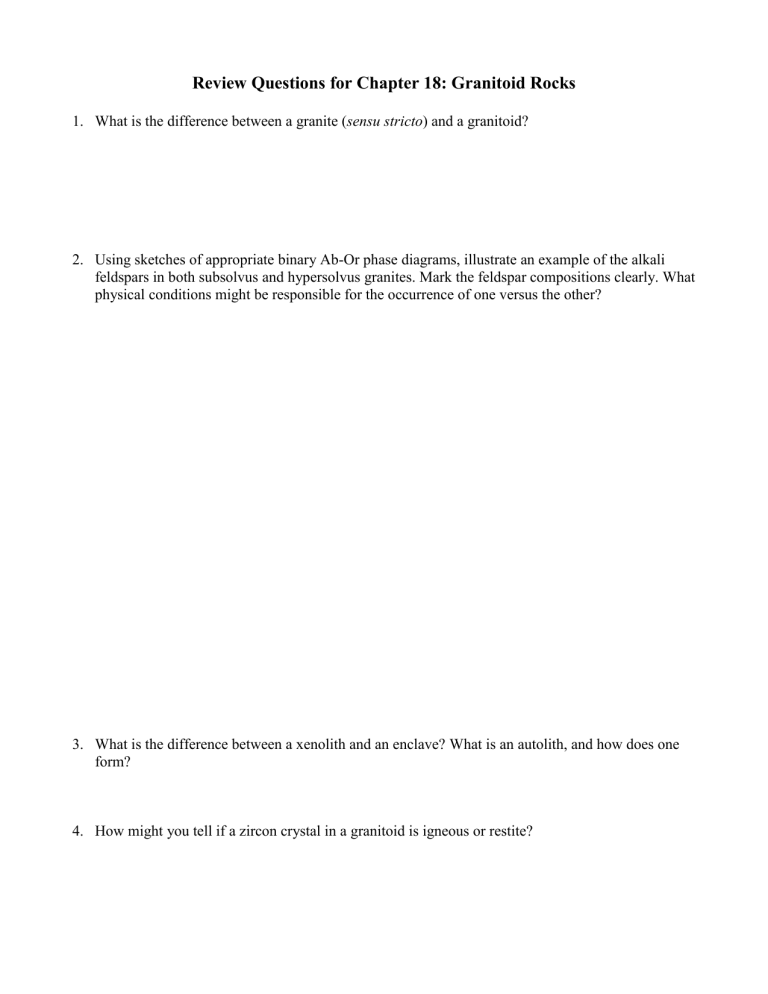
Review Questions for Chapter 18: Granitoid Rocks
1.
What is the difference between a granite ( sensu stricto ) and a granitoid?
2.
Using sketches of appropriate binary Ab-Or phase diagrams, illustrate an example of the alkali feldspars in both subsolvus and hypersolvus granites. Mark the feldspar compositions clearly. What physical conditions might be responsible for the occurrence of one versus the other?
3.
What is the difference between a xenolith and an enclave? What is an autolith, and how does one form?
4.
How might you tell if a zircon crystal in a granitoid is igneous or restite?
5.
The chemical analyses in Table 18.2 are converted to molecular proportions in the table below.
Which granitoids are peraluminous, metaluminous, and peralkaline? Which type appears to be most common? What types of granites seem to be peraluminous? Why?
Oxide 1 2 3 4 5 6 7 8 9 10 11 12
Al
2
O
3
0.138 0.115 0.128 0.149 0.139 0.137 0.122 0.153 0.148 0.156
CaO 0.083 0.002 0.009 0.076 0.055 0.034 0.013 0.057 0.055 0.132
Na
2
O 0.056 0.089 0.063 0.064 0.051 0.040 0.066 0.079 0.059 0.050
0.149 0.158
0.075 0.152
0.063 0.045
K
2
O 0.003 0.050 0.050 0.013 0.037 0.043 0.049 0.019 0.036 0.012 0.036 0.003
6.
What principal genetic factors control the major element chemical composition of an igneous rock?
7.
Why does high LIL/HFS suggest a subduction-related origin?
8.
What is the difference between fluid-saturated and fluid-absent melting?
Which would occur at a lower temperature? Explain.
Which is more likely in the deep crust? Why?
What requirements, in terms of P-T-t path, metamorphic reactions and H
2
O-saturated solidus, must be met for fluid-absent melting to occur?
9.
How does I-type granite differ from S-type? From M-type? From A-type?
10.
What type of granitoids are formed with no genetic connection to continental or arc crust? How do they form?
11.
What is a mafic underplate and why do they form where they do? Once solid, are they part of the mantle or the crust? Why?
12.
Compare the shield geotherms in Figure 1.11 with the H
2
O-saturated granitoid solvus in Figure
18.5. Do they intersect? If so, why aren’t granitoids formed everywhere in the continental crust?
13.
What is the probable heat source for post-orogenic granitoid formation?
14.
What is usually meant by bimodal magmatism? Cite a typical example and describe briefly the source of each component.
15.
What are the probable roles of the crust and of the mantle in granitoid formation?
16.
What events might trigger the formation of extensive granitoids?
17.
What is a komatiite and why, given what you learned in Section 11.1, are they unlikely to form today?
18.
In what ways were tonalites probably formed? Be sure you make the principles clear.
19.
Compare the rates of formation of continental crust in the past with those of today.
20.
How can the continental crust be andesitic on average when the majority of modern magmatism that adds to the crust be basaltic?


